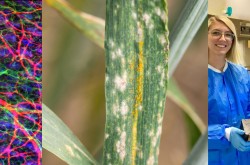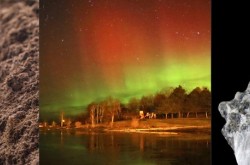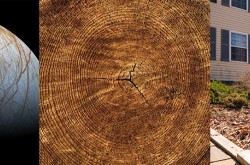Des comètes qui passeront près de la Terre en 2017 et 2018


En 2017 et 2018, trois comètes passeront relativement près de la Terre. La luminosité de l’une d’entre elles est même visible à l’œil nu. Grâce à l’aide d’astronomes amateurs, la NASA prévoit les étudier en détail. Jetez un coup d’œil aux derniers progrès scientifiques de la NASA.
Nous sommes désolés mais l'article ressource est disponible seulement en anglais.
A look at the comets that will be close to Earth in 2017 and 2018. Produced by NASA's Science Mission Directorate.
Transcription
Comets are some of the most interesting objects in the solar system. Water that filled the ancient oceans of Earth might have been delivered by comets. And there is growing evidence that many comets (as well as some primitive asteroids) contain molecules key to life. NASA has sent space probes to travel hundreds of millions of miles to study these icy interlopers from the outer solar system.
Comets are balls of frozen gases, rock and dust that orbit the sun. Jets of gas and dust from comets form long tails that can be seen from Earth when they fly close enough to our planet.
In 2017 and 2018, three comets will pass near the Earth.
Their names are 41P/Tuttle-Giacobini-Kresak, 45P/Honda-Mrkos-Pajdusakova, and 46P/Wirtanen. Astronomers call them “41P”, “45P”, and “46P”, for short.
At closest approach on April 1, 41P was only 56 times farther from Earth than the Moon. 45P was even closer at 31 lunar distances when it flew by on February 11. And 46P approaches 30 lunar distances, on December 16, 2018.
Kelly Fast, Program Manager in the Near-Earth Object Observations Program at NASA Headquarters says, “This provides a good opportunity to do science without having to launch a spacecraft.”
Telescopes around the world have been trained on the comets as they pass by, studying their structure and chemical compositions.
For the general public, comet 45P was an easy target for small telescopes when it passed closest to Earth in February, and 41P will be an easy telescope target through May of 2017. But 46P will be the biggest attraction. In December 2018, it could be visible to the naked eye from dark sky sites.
Astronomer Tony Farnham of the University of Maryland says, “46P has a small nucleus, but is known to be a ‘hyperactive’ comet. It is probably ejecting ice crystals from its surface, producing higher than normal activity.”
This hyperactivity may contribute to the naked-eye brightness of 46P. It also makes the comet somewhat unpredictable with unexpected surges in activity—and visibility—possible as it passes by.
These comets have been so close that amateur astronomers can help study them, too. Farnham is assisting Nalin Samarasinha at the Planetary Science Institute in Tuscon, Arizona with the organization of the “4*P Coma Morphology Campaign” to coordinate the efforts of amateurs worldwide.
“Amateur astronomers can help us monitor these comets without interruption,” explains Farnham. “With observers distributed around the world, we can get much better coverage, with fewer and shorter breaks.”
“We can then combine amateur observations with observations from professional telescopes to study the structures in the comet’s atmosphere—or ‘coma.’ If we use the amateur data in our studies, then they get to be an author on any papers that result.”
“A few years back, we used this same type of network for our studies of comet ISON, and they proved very successful, with data from 23 different groups around the world.”
For more about objects in and around Earth’s neighborhood, stay tuned to science.nasa.gov.























